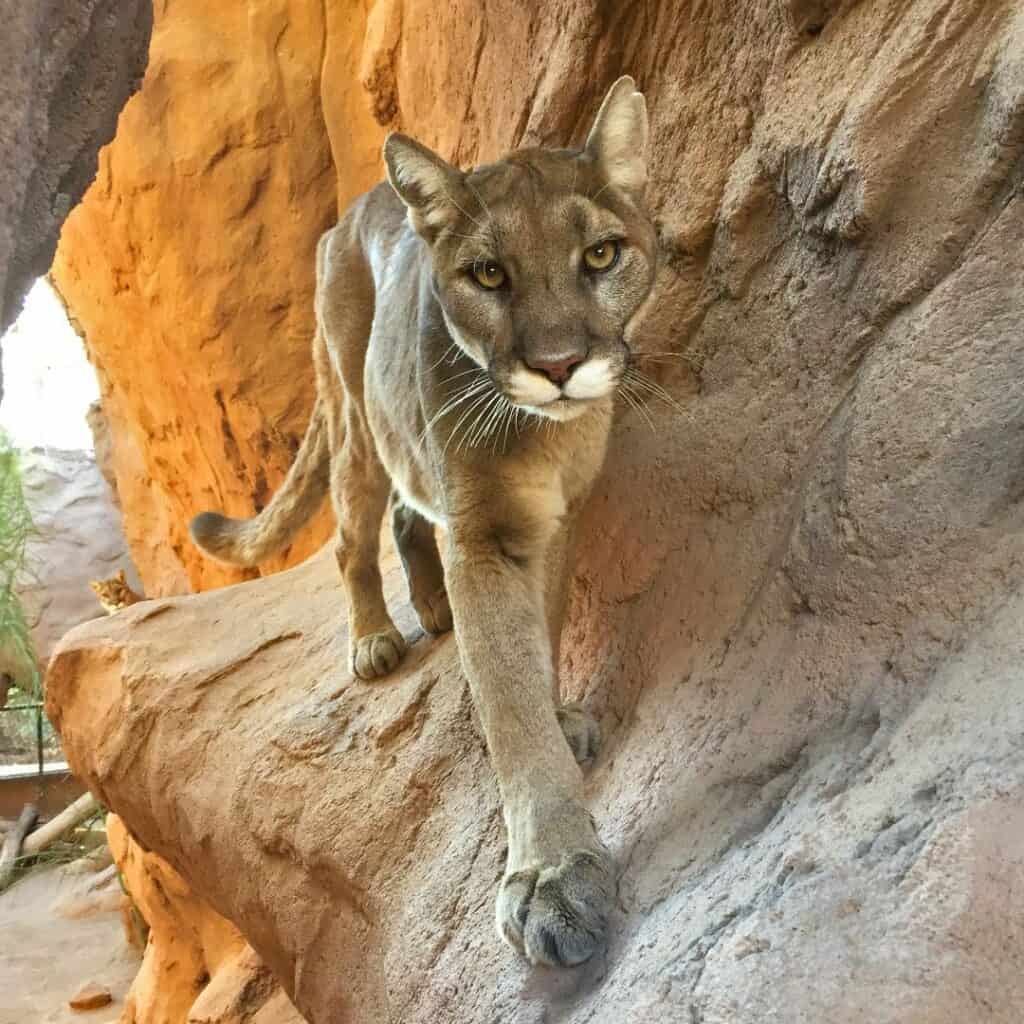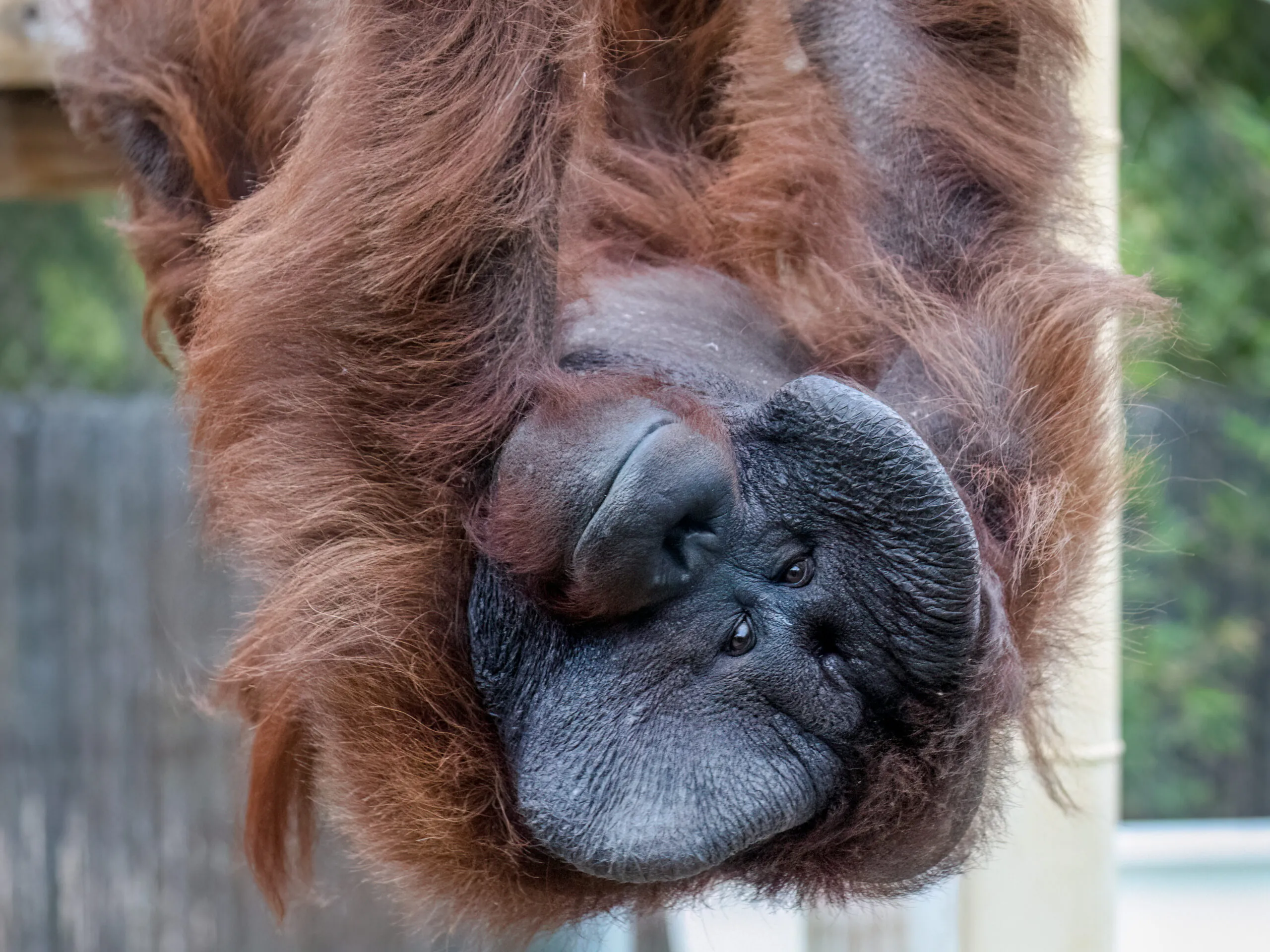Blog
Mountain Lion Sisters

Mountain lion sisters Sierra and Mystic were rescued from South Dakota in 2007, after hunters shot and killed their mother. They were two of seven cubs orphaned that season. The South Dakota Game, Fish, and Parks department determined that the cubs were unable to survive on their own, so they were sent to new homes. One factor the department takes into account is the cubs’ ability to feed themselves. Most mountain lions stay with their mother for two years, moving from a diet of milk to small game around three to six months of age. Though Sierra and Mystic were only a few months old at the time of their capture, they already had a confirmed kill. Despite this surprising accomplishment, they were deemed too small and inexperienced to remain alone in the wild.
So, the sisters arrived at the Phoenix Zoo just as the 2008 Superbowl was kicking off at the nearby Phoenix Stadium. In honor of this event, the public voted to name the two “Ely” and “Brady” after the famed footballers. But the keepers prefer Sierra and Mystic, respectively. Those names capture the grace with which the sisters bound onto the rock ledges in their exhibit, and how their kohl-lined eyes sparkle with interest when guests appear.
Keeper Danielle describes Sierra as “striking” with her more angular face and “outgoing” personality. She is the first to approach keepers and doesn’t hesitate to bat her sister away from toys and food she considers hers.
Though the two sisters will lay side and by side and occasionally groom one another, they – like all siblings – will occasionally get into a bit of a tiff. “Whatever we give them, we have to give them two,” Danielle said, “otherwise they’ll fight over it.”
Right now, they particularly enjoy paper bags, especially grain bags from the hoofstock pens. “They absolutely love the bags. They shred them to pieces.” Keepers place the bags in different locations within the sisters’ exhibit, encouraging the cats to stalk their “prey.”
When they aren’t playing with their toys, the sisters like to doze on the rock ledge at the back of their habitat. “They take cat-napping very seriously,” Danielle said. In the wild, mountain lions are most active at dawn and dusk, when their main source of prey – deer – are out and about. A recent study found that mountain lion beds are usually “tucked underneath the low-lying boughs of a tree, or against the rugged face of an inaccessible cliff” to protect the cats from bears and wolves.
Though Sierra and Mystic don’t have to worry about those threats, they are wary of humans. Danielle noted there has been some debate in the scientific community about whether mountain lions should be classified as “big cats” like African lions and Sumatran tigers, or if they are just big “small cats,” like sand cats and Cheetahs. “They seem like small cats in that they are wary, stubborn, and not as food motivated.”
If the sisters don’t want to perform their training for the day – like standing on their hind legs so keepers can inspect their front paws – they will simply ignore all offerings of food and engage in a “voluntary fast.” According to Danielle, “they also get uneasy if more than one zookeeper is present, because that means something’s up.”
Perhaps this is part of the mountain lion’s solitary nature. Excluding mothers with cubs, most mountain lions live alone, though their territories may overlap. Mountain lions have the largest range of any wild land animal in the Americas, spanning from the Yukon Territory in Canada to the Southern Andes. As a result, mountain lions live in a variety of habitats, from mountainous deserts to forests to open areas with little vegetation.
Despite being classified as “Least Concern” by the International Union for Conservation of Nature (IUCN), a few mountain lion populations are considered to be extinct. Notably, the Eastern Cougar was declared extinct in 2018. This term refers to mountain lions (also known as cougars, panthers, or pumas) that dwelt east of the Mississippi River, excluding the Florida mountain lion population. Sources estimate that Eastern Cougars were wiped out and pushed out by the end of the 1930s due to hunting and human settlement.
According to the Florida Fish and Wildlife Conservation Commission, approximately 120-230 adult mountain lions remain in Florida. Any other sightings in the Eastern US are often found to be individuals that wandered from their western ranges. Officials still debate the efficacy and ethics of reintroducing mountain lions into the Eastern United States or breeding them with the existing Florida Panther population. In 1995, Floridian officials sanctioned the breeding of Texas mountain lions with the dwindling population of Florida Panthers, “preventing its demise” and “reinvigorating” the population to the numbers we see today.
Nevertheless, the Zoo is not involved in any mountain lion breeding efforts, and neither Sierra nor Mystic are likely to become mothers in this lifetime. But they will have each other and are in excellent health for their 13 years of age.






